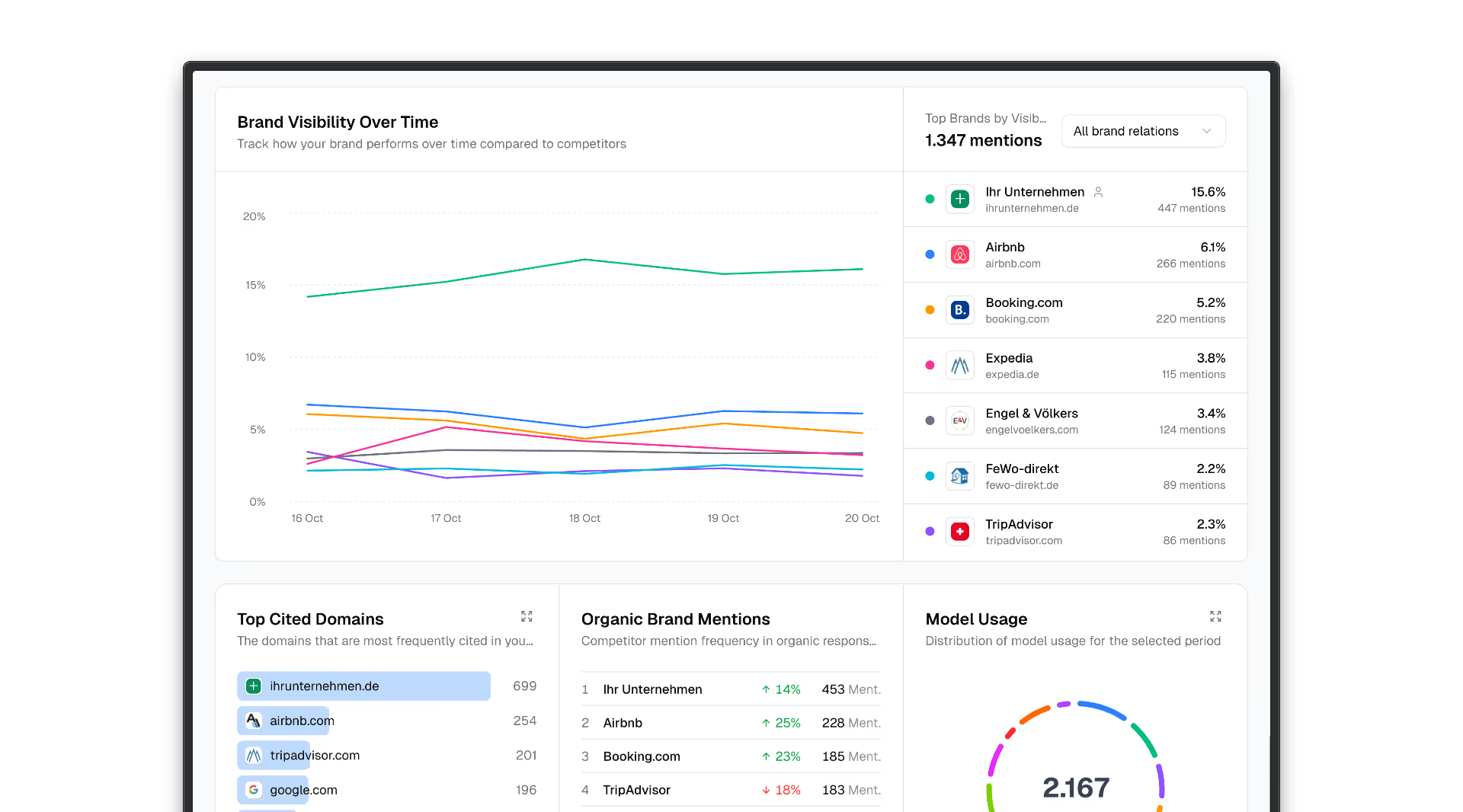1. Why AI not only understands content but structures
For AI systems, content is not what looks beautiful — but what Clearly arranged and logically structured is.
Instead of intuitive understanding, these systems work with patterns:
- What is a question, what is an answer?
- What is a running text, what is a list?
- Is there a headline, a summary, a conclusion?
Only when the structure is readable Can the content be meaningfully evaluated and integrated. An FAQ that is not recognizable as such — remains invisible to many systems. You can find out more about AI visibility in Part 1 of the series
2. Format by format: How to make your content AI-readable
Here we'll show you what you should pay attention to when it comes to typical content formats — so that AI systems can understand and quote them.
FAQs & help pages
Why they're important:
AI systems love question-answer structures — they comply with the typical prompt style (“How does... work? “).
This is how you structure correctly:
Feature or product pages
Why they're important:
This gives rise to many answers to: “What can the product do? ” or “What are the benefits of XY? ”
This is how you structure correctly:
- Clear, talking H2 (“What the feature does”)
- Bullet points for benefits and features
- Always contextualize statements (“Ideal for...”, “Particularly suitable for...”)
- Separate technical details from benefit arguments
About us pages
Why they're important:
check AI systems, Who is speaking — and with which background.
This is how you structure correctly:
- Clear information about the team, services, specialization
- Link to services, location, if applicable, foundation/experience
- Not just empty phrases (“We love what we do”)
- Optionally: structured data for organization
Blog articles & guides
Why they're important:
They often provide the best depth of content — when they are well organized.
This is how you structure correctly:
- H1 with a clear topic
- H2 headings as content anchors (e.g. questions, statements, benefits)
- Max 4-6 lines per paragraph
- Introduction + Don't forget the conclusion
- Include internal links
Reference or project pages
Why they're important:
AI systems want examples. But only when they complete & comprehensible are.
This is how you structure correctly:
- Introduction with project goal
- Procedure section (performance, tools, team size)
- Results in clear terms — with figures where possible
- Provide industry context: “B2B SaaS”, “industry”, “SMEs”
3. Don't forget technical basics
The best structure is of little use if it is technically illegible. Pay attention to:
Conclusion: Visibility needs format
AI systems don't evaluate design aesthetics — they value clarity, structure, and context. If you want your content to appear in AI responses, you need it build in such a way that they can be understood as building blocks. Because only those who structure cleanly becomes visible — in the AI era and beyond.
This post is part of our series “Visibility in the AI era” — with specific strategies on how to structure your content in an AI-friendly way and make it visible.






